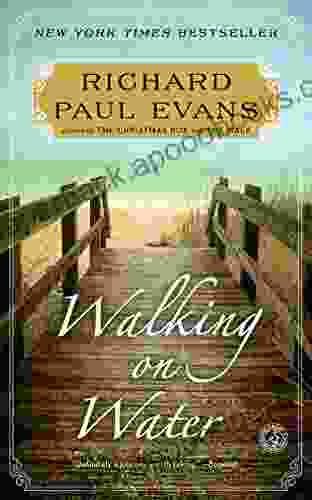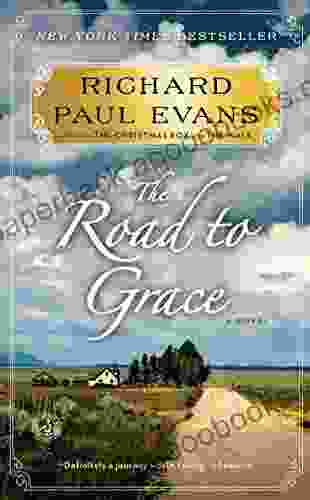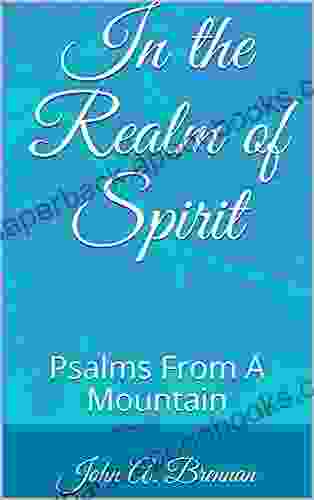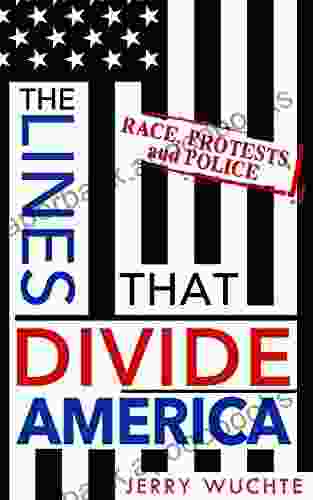Race Protests And Police: A Deep Dive Into The Issues

The relationship between race protests and police is a complex one, with a long and troubled history. In recent years, this relationship has come under increasing scrutiny, as high-profile cases of police brutality and racial profiling have sparked outrage and protests across the country.
5 out of 5
| Language | : | English |
| File size | : | 1961 KB |
| Text-to-Speech | : | Enabled |
| Enhanced typesetting | : | Enabled |
| Word Wise | : | Enabled |
| Print length | : | 111 pages |
| Lending | : | Enabled |
| Screen Reader | : | Supported |
| X-Ray for textbooks | : | Enabled |
In this book, we will take a deep dive into the issues surrounding race protests and police. We will explore the historical, social, and political factors that have shaped this relationship, and offer insights into the challenges and opportunities for progress.
Historical Context
The roots of the current relationship between race protests and police can be traced back to the era of slavery in the United States. During this time, slave patrols were used to enforce the system of racial oppression, and to suppress any form of resistance from enslaved people.
After the Civil War and the abolition of slavery, the role of police in enforcing racial segregation and discrimination continued. In the Jim Crow era, police were often used to enforce laws that restricted the rights of African Americans, and to suppress any attempts to challenge these laws.
The Civil Rights Movement of the 1950s and 1960s challenged the system of racial segregation and discrimination, and led to a number of important changes in the relationship between race protests and police. However, the legacy of slavery and Jim Crow continues to shape this relationship today.
Social and Political Factors
In addition to the historical context, there are a number of social and political factors that have shaped the relationship between race protests and police. These factors include:
- Racial Profiling: Racial profiling is a form of discrimination in which police stop, question, or search people based on their race or ethnicity, rather than on any reasonable suspicion of criminal activity. This practice is a major source of tension between police and communities of color.
- Police Brutality: Police brutality is the use of excessive or unnecessary force by police officers. This practice has a long history in the United States, and it continues to be a major problem today.
- Lack of Accountability: Police officers who engage in misconduct are often not held accountable. This lack of accountability contributes to a sense of frustration and anger among communities of color, and it undermines trust in the police.
Challenges and Opportunities
The relationship between race protests and police is a complex one, with a number of challenges and opportunities for progress. Some of the challenges include:
- Overcoming Historical Legacies: The legacy of slavery and Jim Crow continues to shape the relationship between race protests and police. This legacy can make it difficult to build trust and cooperation between police and communities of color.
- Addressing Racial Profiling and Police Brutality: Racial profiling and police brutality are major sources of tension between police and communities of color. These practices must be addressed in Free Download to build trust and improve the relationship between police and these communities.
- Ensuring Accountability: Police officers who engage in misconduct must be held accountable. This is essential for building trust and restoring confidence in the police.
Despite these challenges, there are also a number of opportunities for progress in the relationship between race protests and police. These opportunities include:
- Building Trust Through Community Policing: Community policing is a strategy that focuses on building relationships between police and the communities they serve. This approach can help to overcome historical legacies of mistrust and build trust between police and communities of color.
- Implementing Bias Training: Bias training can help police officers to identify and overcome their own biases. This training can help to reduce racial profiling and police brutality.
- Empowering Communities: Communities of color must be empowered to hold police accountable for their actions. This can be done through community oversight boards and other mechanisms.
The relationship between race protests and police is a complex one, with a long and troubled history. However, there are also opportunities for progress. By working together, we can build trust, reduce tension, and create a more just and equitable relationship between police and communities of color.
5 out of 5
| Language | : | English |
| File size | : | 1961 KB |
| Text-to-Speech | : | Enabled |
| Enhanced typesetting | : | Enabled |
| Word Wise | : | Enabled |
| Print length | : | 111 pages |
| Lending | : | Enabled |
| Screen Reader | : | Supported |
| X-Ray for textbooks | : | Enabled |
Do you want to contribute by writing guest posts on this blog?
Please contact us and send us a resume of previous articles that you have written.
 Book
Book Novel
Novel Page
Page Chapter
Chapter Text
Text Story
Story Genre
Genre Reader
Reader Library
Library Paperback
Paperback E-book
E-book Magazine
Magazine Newspaper
Newspaper Paragraph
Paragraph Sentence
Sentence Bookmark
Bookmark Shelf
Shelf Glossary
Glossary Bibliography
Bibliography Foreword
Foreword Preface
Preface Synopsis
Synopsis Annotation
Annotation Footnote
Footnote Manuscript
Manuscript Scroll
Scroll Codex
Codex Tome
Tome Bestseller
Bestseller Classics
Classics Library card
Library card Narrative
Narrative Biography
Biography Autobiography
Autobiography Memoir
Memoir Reference
Reference Encyclopedia
Encyclopedia John Bell
John Bell Lady Mary Wortley Montagu
Lady Mary Wortley Montagu Raj Kumar
Raj Kumar Jerrod S Smelker
Jerrod S Smelker Jean Kinney Williams
Jean Kinney Williams Jeremy A Henry
Jeremy A Henry Jim Gramon
Jim Gramon Scott Chaney
Scott Chaney Jillian Boehme
Jillian Boehme Joanna Ngai
Joanna Ngai Jerry Arcidiacono
Jerry Arcidiacono Jennifer Mackewn
Jennifer Mackewn Ruby Dixon
Ruby Dixon Sara Wallace Goodman
Sara Wallace Goodman Jean Heller
Jean Heller Jennyandteddy
Jennyandteddy Joseph Story
Joseph Story Jen Carrigan
Jen Carrigan Jerry Doyle
Jerry Doyle J Saman
J Saman
Light bulbAdvertise smarter! Our strategic ad space ensures maximum exposure. Reserve your spot today!

 Raymond ParkerThe New Uplifting Historical Fiction Saga In The Ww2 Shop Girls The Shop...
Raymond ParkerThe New Uplifting Historical Fiction Saga In The Ww2 Shop Girls The Shop...
 Albert CamusThe Songs of Lonesome Traveler, 2nd Edition: A Musical Tapestry of American...
Albert CamusThe Songs of Lonesome Traveler, 2nd Edition: A Musical Tapestry of American... Glenn HayesFollow ·17.5k
Glenn HayesFollow ·17.5k Felipe BlairFollow ·11.6k
Felipe BlairFollow ·11.6k Miguel NelsonFollow ·5.5k
Miguel NelsonFollow ·5.5k Haruki MurakamiFollow ·12.7k
Haruki MurakamiFollow ·12.7k Matthew WardFollow ·3.9k
Matthew WardFollow ·3.9k Juan RulfoFollow ·19.5k
Juan RulfoFollow ·19.5k Alec HayesFollow ·13.7k
Alec HayesFollow ·13.7k Jesus MitchellFollow ·3.8k
Jesus MitchellFollow ·3.8k

 Preston Simmons
Preston SimmonsEmbark on a Literary Odyssey with "Walking on Water": A...
Prepare to be swept...

 Ernesto Sabato
Ernesto SabatoUnlocking Policy Analysis: Dive into the Intricacies of...
: The Realm of Policy...

 Forrest Reed
Forrest ReedThe Road to Grace Walk: A Journey of Spiritual Growth and...
In the tapestry of life, we...

 Evan Simmons
Evan SimmonsTip Neill and the Democratic Century: A Political Odyssey...
The Rise of a Political Giant In the...

 Mark Mitchell
Mark MitchellUnwrap the Magic: A Review of Christmas Memory by Richard...
As the cold winter months draw near, and...

 Percy Bysshe Shelley
Percy Bysshe ShelleyBeyond the Veil: Delve into the Realm of Spirit with In...
Unveiling the Mysteries of the Unseen...
5 out of 5
| Language | : | English |
| File size | : | 1961 KB |
| Text-to-Speech | : | Enabled |
| Enhanced typesetting | : | Enabled |
| Word Wise | : | Enabled |
| Print length | : | 111 pages |
| Lending | : | Enabled |
| Screen Reader | : | Supported |
| X-Ray for textbooks | : | Enabled |








